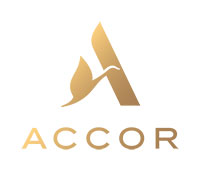
Jones Lang LaSalle Hotels Identifies Seven Winners in the U.S. Lodging Market (United States)
|
 |
Jones Lang LaSalle Hotels Identifies Seven Winners in the U.S. Lodging Market (United States)
|
Category: Worldwide - United States - Industry economy
- Figures / Studies
This is a press release selected by our editorial committee and published online for free on 2009-06-02
New report identifies bright spots in current hotel investment environment
Following an analysis of the U.S. lodging industry, Jones Lang LaSalle Hotels today released a new research study, entitled FocusOn: Seven winners in the current market, that identifies segments and players that are more resilient, are performing better, or are less affected by the slowdown in economic fundamentals and the liquidity drought.
While the overall economy and the lodging market remain stressed, there are areas of the business that are positive on a relative and absolute basis,” said Arthur Adler, managing director and CEO-Americas for Jones Lang LaSalle Hotels. “These segments reflect current investment opportunities in the industry today.”
1. Mid-scale hotels without F&B fare best
“Mid-scale properties without food and beverage are weathering this recession better than any other hotel segment, both in revenue and operating margins,” said Al Calhoun, a managing director for Jones Lang LaSalle Hotels. “Many corporate travelers are trading down to less expensive hotel chains to reduce travel expenditures and avoid scrutiny from the public.”
Mid-scale hotels without food and beverage also outperformed the rest of the market following 9/11. In 2002, this segment had the lowest revenue per available room (RevPAR) decline (-0.6 percent) and strongest room revenue rebound (5.5 percent). In 2003, the mid-scale without food and beverage segment posted the second-highest room revenue increases of any segment, according to Smith Travel Research. This segment should also continue to outperform in today’s market.
2. Hotels located along interstate highways are the least impacted
“Through April 2009, hotels along interstate highways posted an 8.8 percent RevPAR decline, which is far more moderate than the national average,” said Calhoun. “In addition, interstate hotels are less impacted by airline capacity cuts since most hotels in this category are located in “drive-to” destinations.” With gas prices lower than last year, it will be less expensive for travelers to take to the road this summer, further bolstering hotels located along interstate highways.
3. Renovation costs are down 20 percent
Another bright spot in the current market is that renovation costs have decreased by approximately 20 percent. The cost of building materials has declined due to lower demand in the construction industry and labor costs are lower as well. For owners with sufficient capital, this is an opportune time to upgrade properties and position them for future rate growth when lodging demand recovers.
4. Liquidity crisis to keep supply growth in check
During 2008, approximately 145,000 new rooms entered the U.S. hotel market, accounting for 3.2 percent of existing supply. During 2009, new room openings are expected to represent a more moderate 2.2 percent of existing supply.
“The supply pipeline is trailing off throughout the industry,” said Adler. “There has already been a notable drop in the number of hotels under construction. The silver lining of the credit crisis for hotel owners is the attrition in new rooms scheduled for delivery in 2009 and beyond.”
5. Lower leveraged investors benefit from less competition
“Companies with debt-ridden balance sheets are battling for survival, while historically conservative investors are celebrating the opportunity of a lifetime,” said Adler. With little debt available for hotel acquisitions, cash abundant investors have actively picked up high quality assets with little competition by purchasing with all-cash or using very low leverage.
“This has proven to be a competitive advantage for non-exchange traded REITs, which were especially active in hotel acquisitions during the last 18 months,” said Adler. Private REIT transaction volume in the United States increased by 22.0 percent in 2008 over 2007, reaching $2.3 billion in 2008.
6. Franchisors being flexible to help franchisees
Franchisors are keenly aware of the financial difficulty that their franchisees are facing. Many franchisors are thus exerting more flexibility as they seek to make the relationships work over the long term.
“A number of brands say their first strategy is to be more proactive on their sales and marketing approach. The large brands are being aggressive and generous in launching sales promotions, such as allowing franchisees to offer a complimentary weekend night for guests in the loyalty program who stay at the chain’s properties a certain number of times,” said Calhoun.
Additionally, when attracting new franchisees, brands are in some cases discounting the initial franchise fee and royalty fees. Flexible or graduated fee structures may also be offered in an attempt to remain competitive. Such structures can also apply to management contracts for brand managed hotels.
7. Opportunistic acquisition funds are lining up
“In response to anticipated attractive acquisition opportunities, a number of hotel investors are raising equity to fuel their acquisition activity. By the end of the first quarter of this year, 23 funds had been announced that include hotels as a primary or major investment objective,” said Calhoun.
While hotel fundamentals remain weak and RevPAR is set to decline further in the United States during 2009, select service assets are currently providing investors a diversification hedge against the broad performance declines experienced across full-service and luxury assets.
|
|







